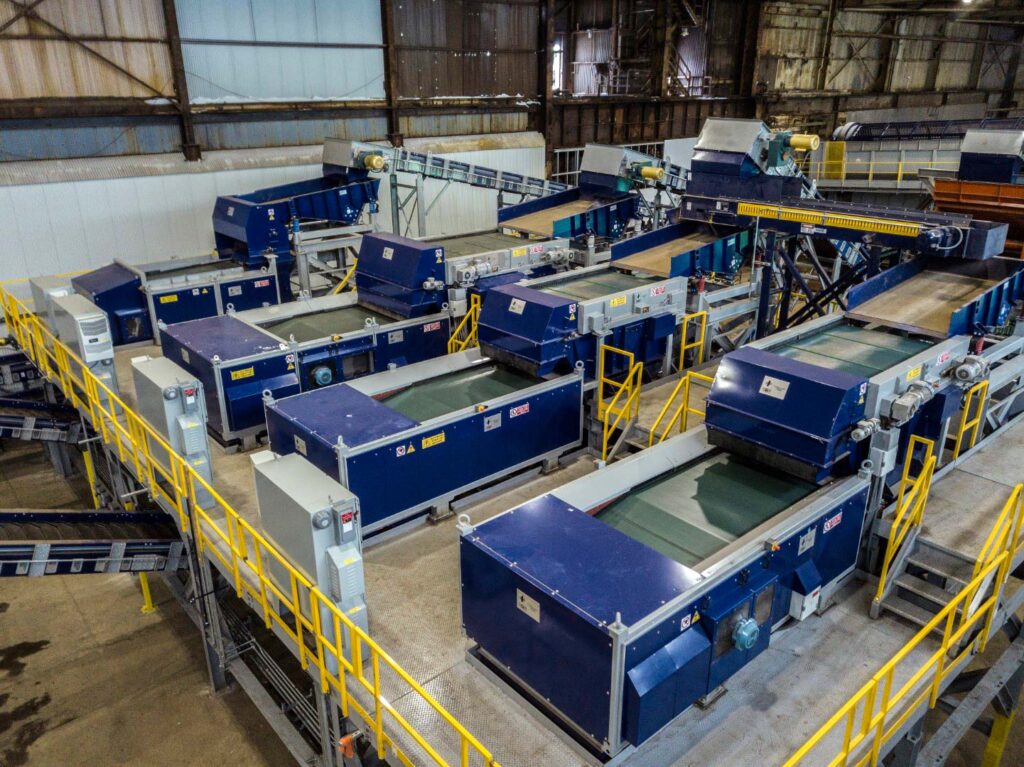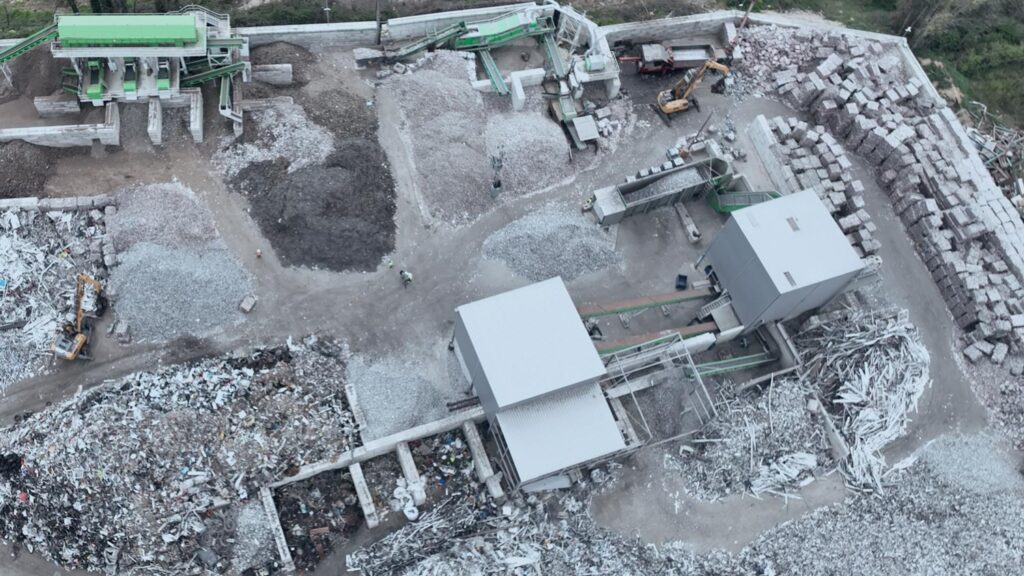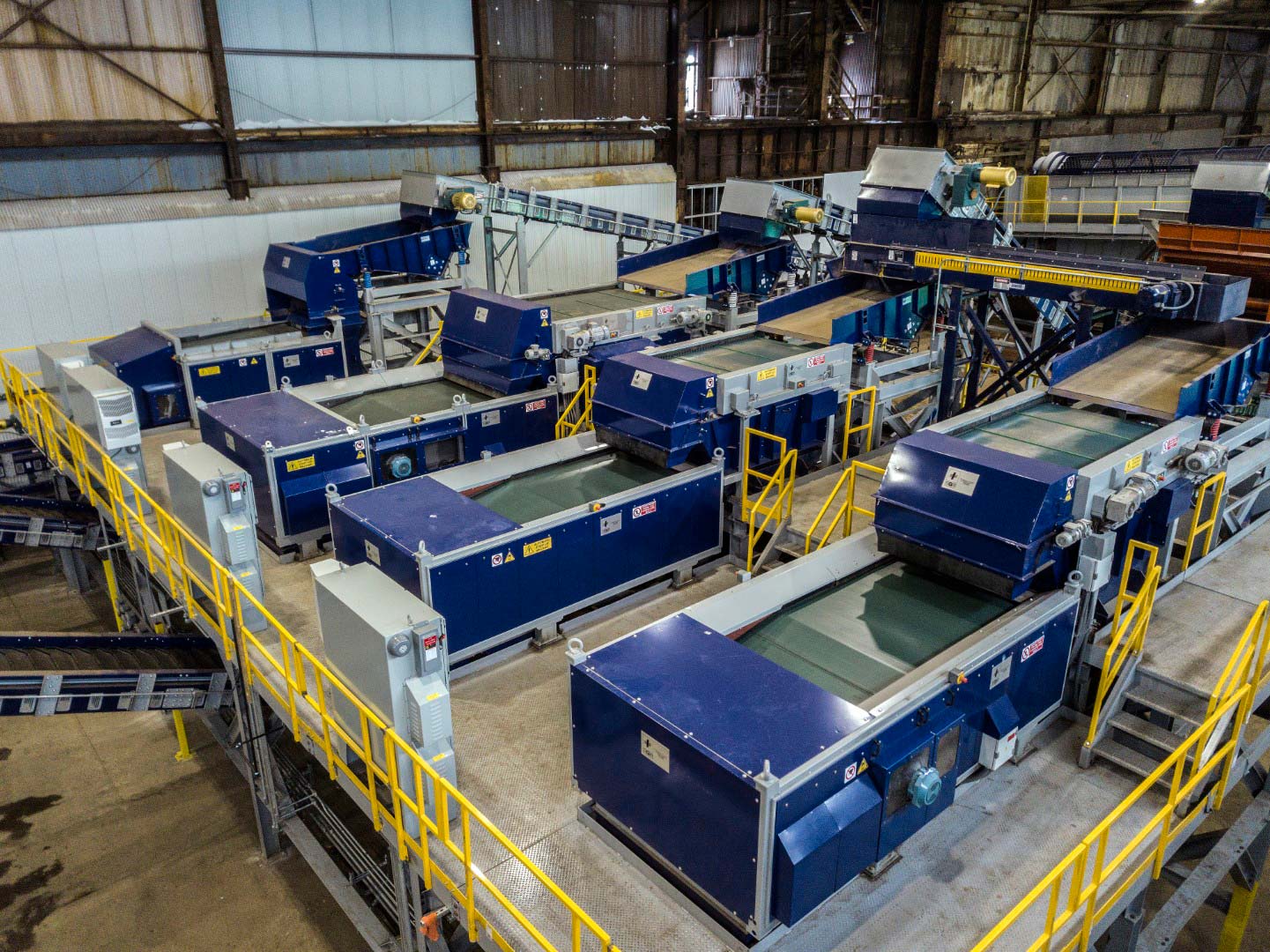
SGM’s Eddy Current Separators precisely separate non-ferrous metals, improving copper recycling and guaranteeing pure materials. Discover how.
In the industrial recycling sector, efficiently isolating non-ferrous metals represents a crucial challenge for maximizing the value of recovered material and reducing environmental impact.
Eddy Current Separators offer a technologically advanced solution for the separation of non-ferrous metals, with a significant impact on copper recycling, allowing for the attainment of high-purity metallic fractions through the application of variable magnetic fields.
These systems leverage the principle of eddy currents to effectively separate non-ferrous metals from mixed waste, ensuring superior performance compared to traditional methods. The process is particularly effective in recovering copper, aluminum, and other precious alloys.
Thanks to their operational speed and separation efficacy, Eddy Current Separators constitute a strategic investment for any recycling plant. Today, you will discover how to integrate this technology into your production processes and request personalized consultancy to optimize your plant’s results.
Here is what we will cover:
What are non-ferrous metals?
Non-ferrous metals are metals that do not contain iron, such as aluminum, brass, bronze, zinc, and lead.
Many non-ferrous metals are characterized by high electrical conductivity, corrosion resistance, and some, like aluminum and its alloys, stand out for their structural lightness. These qualities make them fundamental in strategic sectors such as electronics, automotive, aerospace, and construction.
Their malleability and ductility simplify processing and forming operations, while their resistance to wear guarantees a long lifespan. In the industrial context of copper recycling, correctly identifying and separating these materials sensitive to induced currents is essential for recovering economic value.
Eddy Current Separators exploit high-frequency rotating magnetic fields to induce currents in conductive metals, creating repulsive forces that allow for selective separation.
The concentric rotor of these devices ensures maximum exposure of the material to the magnetic field, operating at speeds ranging from 3,000 to 4,800 revolutions per minute. In this way, these ductile and conductive metals are recovered in their optimal form, preserving their properties.
SGM Magnetics’ Eddy Current Separators embody technological excellence applied to industrial recycling. Beyond ensuring rapid and precise separations, they allow for maximizing the quality of recovered materials, limiting waste, and accurately integrating production processes.
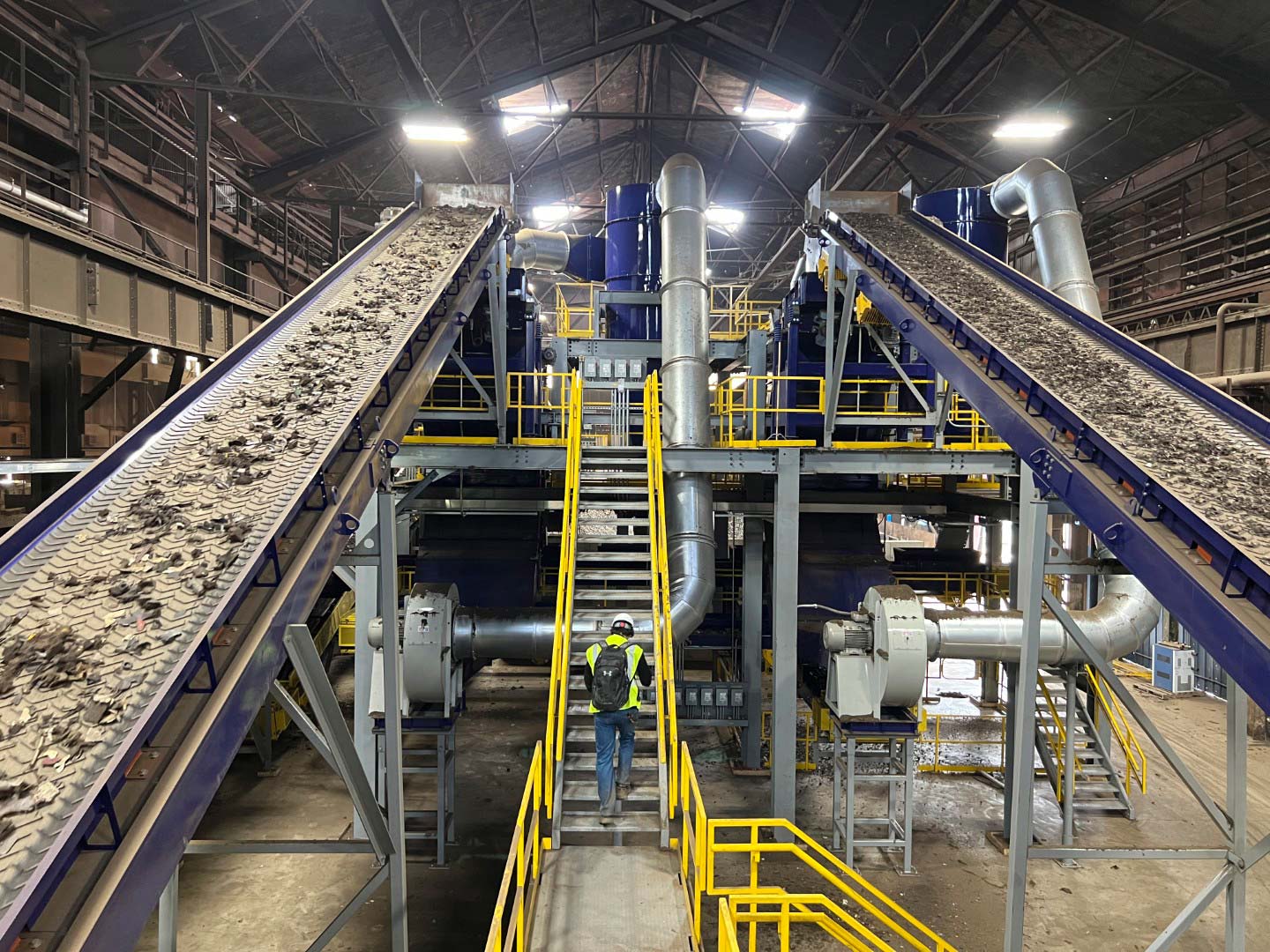
How is copper recycled?
The copper recycling process requires a sequence of coordinated operations to ensure maximum recovery yield and the purity of the final product.
Thanks to the adoption of continuous monitoring techniques and advanced automation systems, it is possible to optimize every phase of treatment and reduce processing times. This also helps limit the loss of valuable components, increasing the sustainability and economic efficiency of the plant.
Qualitatively analyzing the material input is fundamental for ensuring constant, high-level results. At the same time, correctly programming the operating parameters of the Eddy Current Separators based on the physical characteristics of the non-ferrous metals ensures optimal material recovery.
Below are the main operating phases of copper recycling:
- Material preparation and screening, with preliminary removal of ferrous elements using magnetic separators and Eddy Current Separators to isolate copper.
- Controlled crushing (5-15 mm) to optimize separation and process performance.
- Final high-speed separation with Eddy Current Separators, with selective recovery of the non-ferrous metals into dedicated containers.
- Quality control via chemical or spectroscopic analysis, to verify purity and compliance with market standards.
The accurate calibration of the ECS parameters, including adjustments to the distance between the rotor and the conveyor belt, then improves separation efficiency, decreasing the loss of valuable material.
Collaborating with specialized technicians allows for the implementation of the most suitable solution for your copper recycling plant, optimizing even the final and most decisive phases. These include controlled melting and refining of copper until high-quality commercial ingots are obtained.
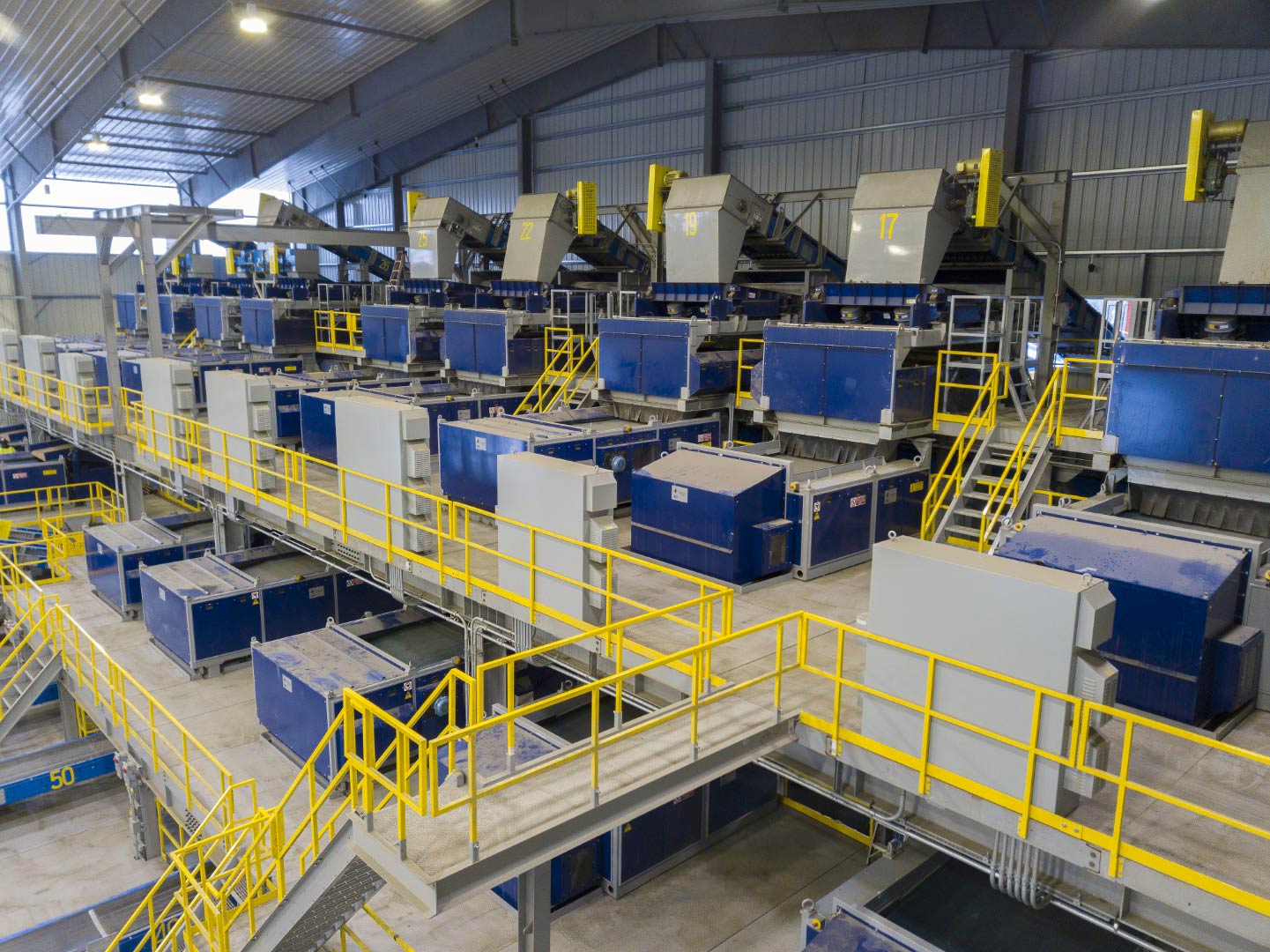
Where to recycle non-ferrous metals
The choice of the appropriate recycling center directly influences the efficiency of recovery and the economic value obtainable from the materials.
Choosing a certified plant, with qualified personnel and traceable processes, ensures operational safety, reduces risks, and facilitates the efficient management of materials throughout the entire supply chain.
It also increases overall profitability and operational safety, while intelligent management of flows and processing times reinforces the precision in material separation.
Opting for a certified plant with qualified personnel and traceable processes equipped with advanced technologies such as SGM Eddy Current Separators, guarantees regulatory compliance, reduced environmental impact, and integrated recycling within the production process.
Below are some examples of ideal structures for the recycling of non-ferrous metals:
- Certified industrial centers with dedicated lines for copper recycling and high-efficiency automated separation.
- Authorized WEEE (Waste Electrical and Electronic Equipment) plants for the recovery of copper and aluminum from discarded electronic devices.
- Specialized non-ferrous metal centers with pre-treatment and optimized mechanical separation.
- Integrated logistics platforms for collection, transport, and treatment, with complete material traceability.
Investing in facilities equipped with Eddy Current Separators ensures significant environmental benefits through the reduction of waste destined for landfills and the containment of emissions associated with primary extraction.
Partnership with qualified operators in copper recycling also guarantees compliance with the quality standards required by the manufacturing industry.
Contact our sales team to identify the most advantageous recycling solution for your business and schedule a technical visit to your plant.

